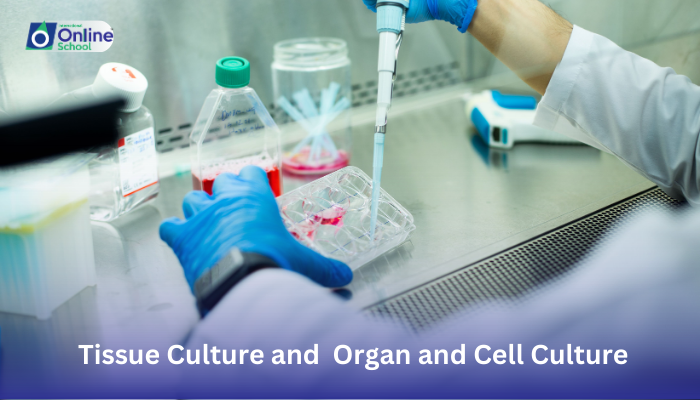
Learning Outcomes:
i. Define and explain the concept of tissue culture, its principles, and its role in plant growth manipulation.
ii. Differentiate between organ culture and cell culture, highlighting the specific types of plant tissues used in each technique.
iii. Appreciate the applications and potential of tissue culture in various fields like agriculture, horticulture, and plant research.
Introduction:
Imagine a world where tiny pieces of plants can be coaxed into becoming full-fledged individuals, a world where manipulating plant growth isn't just a dream but a reality. This is the fascinating realm of tissue culture, a technique that allows scientists and horticulturalists to cultivate plants from different parts of their bodies, bypassing traditional methods like seeds or cuttings. Today, we delve into this green symphony, understanding its principles and exploring the diverse variations within its repertoire.
i. The Maestro of Growth: Understanding Tissue Culture:
Tissue culture is a process that utilizes small bits of plant tissue, like leaves, stems, or buds, called explants, to regenerate into whole plants under controlled conditions of nutrients, hormones, and light. Think of these explants as tiny notes on a musical sheet, holding the potential for a complete melody of growth.
ii. A Branching Path: Organ Culture vs. Cell Culture:
While the core principle of tissue culture remains the same, the type of explants used and the specific techniques employed can vary. Two main types exist:
Organ culture: This technique uses larger explants like shoot tips, buds, or embryos, allowing them to directly develop into complete plantlets. Imagine this as playing a single instrument, the larger explant directly giving rise to the entire melody. Examples include propagating orchids from their buds or regenerating roots from leaf cuttings.
Cell culture: This technique utilizes even smaller explants like single cells or groups of cells. These cells undergo a process called callus formation, where they multiply and differentiate into various cell types, eventually forming plantlets. Imagine this as playing with individual notes, carefully arranging them to create a complete musical piece. Examples include producing disease-free potatoes from single cells or developing genetically modified plants through cell manipulation.
iii. A Symphony of Applications: The Power of Tissue Culture:
Tissue culture isn't just a scientific marvel; it holds immense potential across various fields:
Agriculture: Rapid propagation of disease-resistant and high-yielding crops, improving food security and sustainability.
Horticulture: Producing large numbers of identical plants for ornamental purposes, enhancing landscaping and floral industries.
Plant conservation: Propagating rare or endangered species, contributing to biodiversity conservation efforts.
Plant research: Studying plant development, disease resistance, and genetic engineering, enhancing our understanding of the plant world.
Tissue culture, with its diverse variations and applications, stands as a testament to the ingenuity of science and its potential to revolutionize the way we interact with plants. By understanding the principles, techniques, and applications of organ and cell culture, we gain a deeper appreciation for the green symphony of life and the endless possibilities it holds for a future where plants continue to nourish, beautify, and sustain our world.